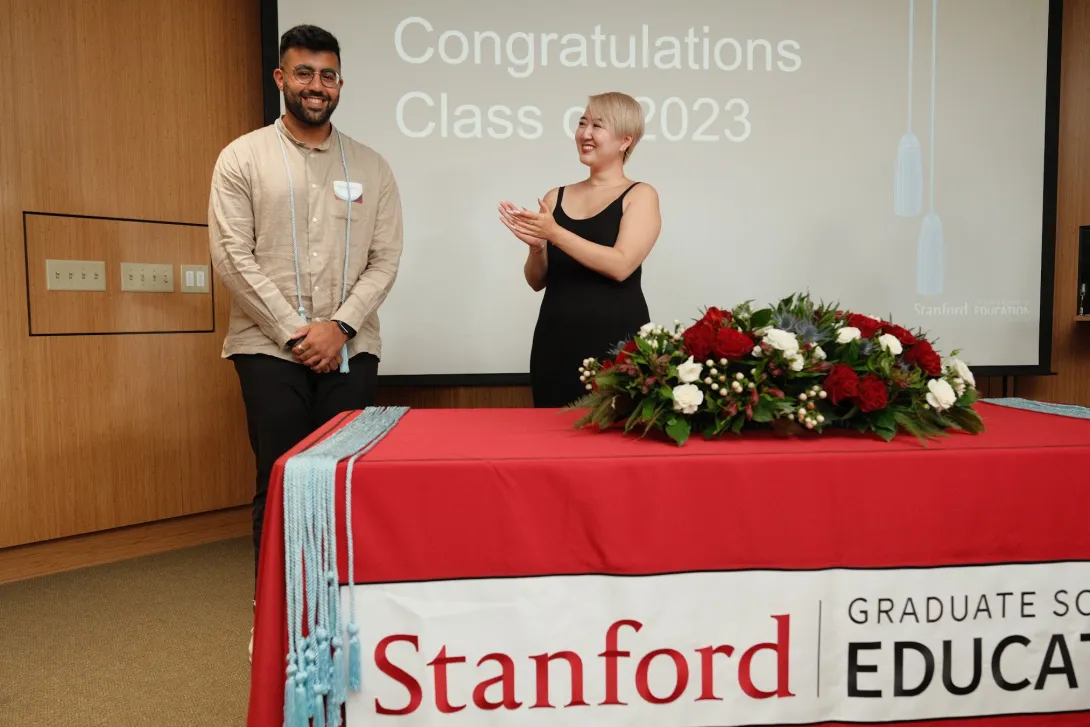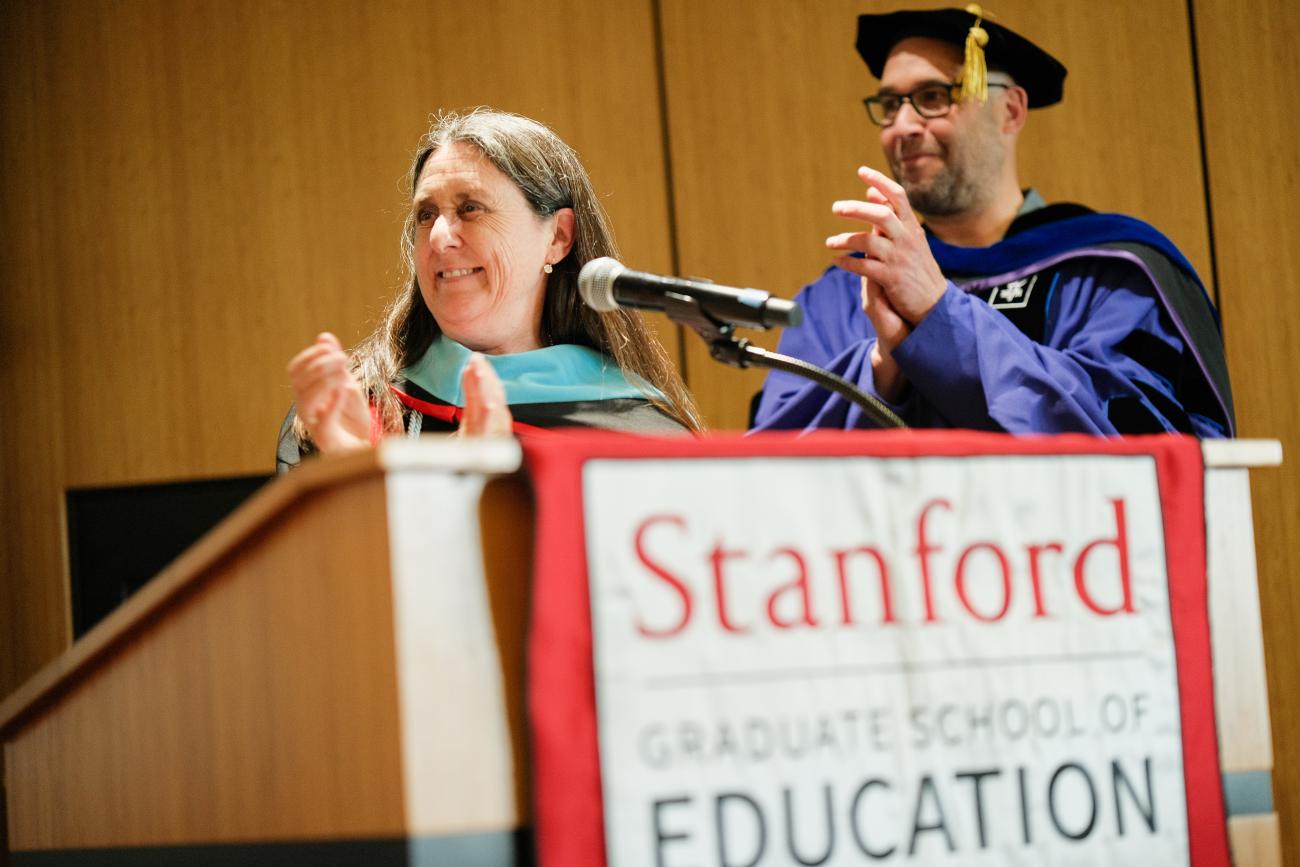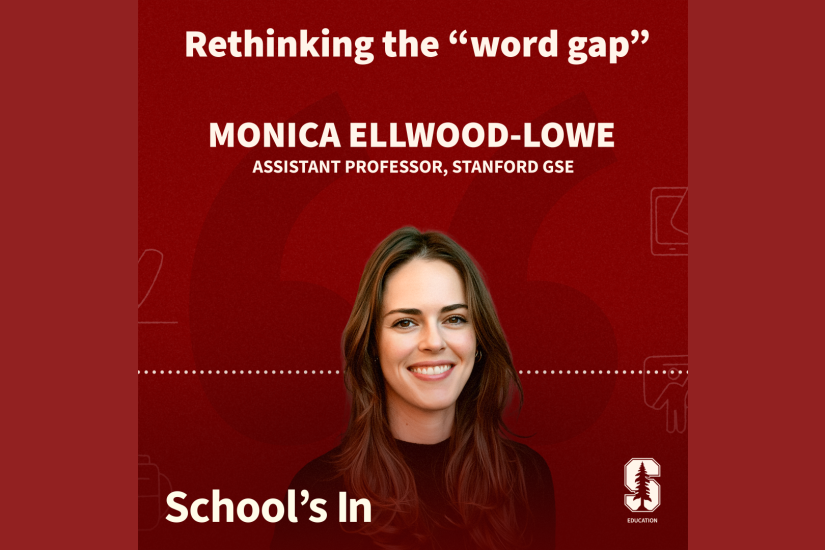
GSE undergraduate programs highlight benefits of studying education
When Neel Kishnani, ’21, MS ’23, started as a software engineer at one of Silicon Valley’s biggest tech companies, he found himself in a bit of an identity crisis.
He had excelled at his computer science classes at Stanford and was a teaching assistant while pursuing his master’s degree — a position where students came to him for help. Now he was working with colleagues with more experience, and suddenly he was the person in the room without all of the answers.
What has helped him adapt to his new environment is embracing opportunities to learn and, when he can, teach — practices he says he honed while pursuing the education minor through Stanford Graduate School of Education (GSE).
“In my job I need to communicate with iPhone users about how to utilize their machines, so distilling the technical knowledge I have and teaching only what’s necessary is a useful skill,” said Kishnani, who works at Apple. “The end goal is for them to be able to problem solve and learn the material.”

Neel Kishnani (left) receives his honor cord for completing a minor of education with the GSE. (Photo: Ryan Zhang)
Kishnani is one of dozens of students each year who participate in undergraduate programs at the GSE (informally abbreviated UP@GSE). The programs introduce students to the field of education through research, theory, and practice while they pursue their bachelor’s degrees in other subjects.
Choose your own adventure
UP@GSE has two degree programs: the education minor, which is led by Senior Lecturer Jennifer Wolf, and the undergraduate honors program, headed by Professor Ari Kelman. Between the two, about 136 minor and honors degrees have been conferred to undergraduate students at Stanford.
“Every once in a while we would get an undergraduate who would go around knocking on doors in the GSE until someone answered, to express their interest in education and the desire to know more,” said Wolf, who originally proposed the minor to Stanford’s faculty senate committee. “Our thinking was that if we offered a minor, students could begin to explore an interest in education, then decide if they want to be a teacher, or pursue education further, or use their study in education to enhance whatever their major field of study was.”
To complete the minor, students are required to take a minimum of six education courses, which include options such as Introduction to Teaching and Learning, Educational Neuroscience, and History of Education in the United States, among others. Over the past 14 years, more than 200 students have graduated with the minor.

Jennifer Wolf (left) and Ari Kelman (right) at the 2023 UP@GSE honor cord ceremony. (Photo: Ryan Zhang)
Alternately, the honors program, which has been around since 1982, requires that students take a minimum of three courses, study their own research question, and submit a thesis in order to complete the research degree.
“Our honors program attracts students who are really interested in their research question, whatever it is,” said Kelman, who has led the program for the past five years. “For most students, the honors research is the first time in the course of their career as students where they’re answering their own questions about their own topic.”
Christian Sanchez, who will graduate with a bachelor’s degree in English this year, centered his education honors research on examining student experiences with the transfer credit evaluation process, as a direct result of his own experiences.
“As a nontraditional student who went through community college, I saw things I wanted to change and ways I wanted to make the process better for older adult learners,” said Sanchez, who would eventually like to serve as a community college president.
“I’ve really enjoyed my experience in my higher ed courses,” he said. “And while it’s a little intimidating to be in a room with students who are at a perceived higher academic level than you are, the experience has been really validating for me in that I feel confident in my own next steps after graduation.”
A symbiotic relationship
The GSE is the only graduate professional school at Stanford that offers a minor, bolstering the school’s connection to the undergraduate class.
“It’s an invaluable way to have fresh perspectives in our graduate-level courses and labs,” said GSE Professor Anne Charity Hudley, who is also the associate dean of educational affairs at the GSE. “Our graduate students are learning from undergrads as they work with them in the class, and our faculty get to connect with students coming in with a different lens.”
UP@GSE also works as a liaison between undergraduate students looking to learn more about education and curriculum, outside of the minor and honors program. An increasing number of majors and departments across the university cross-list or request to use GSE courses for degree completion.
“It’s our mission to reach out to students, invite them into the world of what we do, and prepare them to be citizens of our educational democracy,” Wolf said. “Having these programs encourages not just undergrads but all the other departments to learn about teaching, learning, and education.”
A connection to community through public service
In addition to coursework and research, students who pursue UP@GSE often participate in public service initiatives through the Haas Center for Public Service.
“There’s a real synergistic relationship between the Haas Center and the GSE in that we do a lot of work supporting undergraduates to connect with youth-based programming here at the Haas Center,” said Paitra Houts, director of community engaged learning, focused on education, at the Haas Center.
Opportunities for students to engage with the Haas Center as part of their minor or honors program include Preschool Counts, a service-learning program in which Stanford students help children from East Palo Alto develop their math skills; Ravenswood Reads, where Stanford students tutor children in kindergarten through second grade in reading and language; and summer fellowships, where students intern for local and national organizations to learn more about the fields that they want to enter.
“This public service component is integral, because education is messy,” Houts said. “Theories are amazing, and they create a really incredible foundation, but when you actually go and get out into schools and nonprofits, I think you’re just much more prepared to go into the world and support the change that you learned about, that you want to be driving forward.”
Foster Cournoyer Hogan, who graduated from Stanford in 2021 with a bachelor’s in Native American Studies, said that his summer fellowship connected him to his current job as an operations manager for a Lakota Immersion school in his hometown.
“I realized that, with the combination of my degree and minor, I’d be able to work with this initiative after the fellowship and apply what I learned to continue the momentum that was already going,” Cournoyer Hogan said.
Students who participate in UP@GSE learn skills that extend outside of the education space, such as how to form a convincing argument and how to improve their own learning.
“I think one of the big things that I walked away with as a result of the minor was a certain amount of respect and reverence for the profession of teaching,” Kishnani said. “And that a good learning outcome is only possible with the help of good teachers. It doesn’t just happen by chance.”
Faculty mentioned in this article: Jennifer Wolf , Ari Y. Kelman



